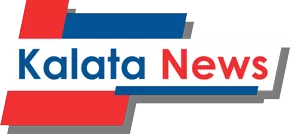By Mthoniswa Banda
AFTER eighty-eight years of continuous operations, one of Africa’s longest mining operations seized to operate in 1994 in the formerly Broken Hill town, now called Kabwe Town in Central Zambia. At its peak, the Kabwe Zinc and Lead Mine was a leading well known supplier of zinc and lead minerals in Southern Africa and the world over.
In Zambia the Kabwe Mine was an anchor industry in the economies of Kabwe Town and Zambia.
At its peak, the mine which occupied a site which was approximately 3 square kilometres and is situated east of the Great North and South of Kabwe Town, operated both open cast and underground mining, mineral processing, smelting and refining facilities. The Mine’s high density townships of Chowa and Kasanda are located to the North East and Northwest of the mining area.
At the time of its closure and during its life time, the mine according to BMR Group PLC, a company focused on recovery of Zinc and Lead from the Kabwe mine tailing deposits, the Kabwe Mine produced the following:
- 8 million tonnes of Zinc (Zn)
- 800 tonnes of lead (Pb)
- 8000 tonnes of vanadium (V2O)
- 80 tonnes of silver (Ag)
- 235 tonnes of cadmium
Kabwe is now internationally recognised an environmental health problem. Past activities at the Kabwe Zinc and Lead Mine have led to widespread pollution of the local area, contaminating the soils and water ways leading to Kabwe being called the world’s most toxic and lead polluted town according to pollution experts. Studies have demonstrated the need for medical treatment for communities that live in the vicinity of the mines where significant levels of lead have been found in some children’s blood.
Local communities living around the mine site have taken interests in the ground dumps of mineral rich tailings, slags and waste left onsite during these 88 mining years and have now begun trying to recover the minerals in the tailings while others are selling these tailings a sand for the numerous construction projects around Kabwe.
Another mine that closed around the same era as the Kabwe Zinc and Lead Mine was the Zambia Consolidated Copper Mines (ZCCM) which got privatised in 1998. Its closure was due to the high cost of maintenance estimated at USD 1 million per day borne by the Zambian government, drop in the copper production levels and the 35% drop in the copper prices at the international metals market from USD 2,300 per tonne in 1997to USD 1,500 per tonne in 1998.
Formed in April 1982 when two mining giants namely Nchanga Consolidated Copper Mines (NCCM) and Roan Consolidated Mines (RCM) merged after being taken over by the Zambian Government, ZCCM was later owned by a partnership of the Zambia Industrial and Mining Corporation (ZIMCO) with 60% shares, ZCI Holdings of Anglo America with 27%, RST International at 7% and 5% shares owned by the public.
At its height ZCCM operated ten mines, three smelters, two refineries and a tailing leach plant dotted around the entire Copperbelt region of Zambia. During this period Zambia was one of the largest producers of copper side by side top copper producers like the Democratic Republic of Congo and Chile among others.
The sudden unplanned closure of ZCCM too created a lot of health and environmental challenges to both the Zambian government and surrounding communities whose effects are still being felt and debated today.
Most of the Copperbelt has a higher concentration of copper in the soil and sulphur dioxide in the air exceeding Zambian and international guidelines. The copper smelters have been responsible for substantial amount of sulphur dioxide emissions into the atmosphere, which have caused acid rain, soil erosion, and crop damage and air pollution. The contamination from on-going mining operations is further aggravated by wind-borne dust particles resulting in accumulation of heavy metals (copper and cobalt and other elements) in the soil.
“Mines often close with little warning as a result of a sudden crisis or a change in company policy, leaving no time to plan. Abrupt mine closures often leave many economic, societal and infrastructure factors not sufficiently addressed,” says researchers Claudia Strambo and May Thazin Aung of Stockholm Environment Institute (SEI).
Geraldine McGuire, mine closure specialist and Managing Director of Sustainable Solutions Global Pty Ltd adds that , “successful mine closures are generally about reverting the land back to its original state, and also to restoring the people back to their original way of life. Mine re-purposing is trying to think of a different use for the mine, instead of simply putting the land back to the way it was. Locals need to be involved in either closing or re-purposing so as to ensure that they will benefit to the fullest extent in the wake of a mining operation moving on.”
The sudden closures of Kabwe Zinc and Lead Mine and the ZCCM operated mines meant that the negative socio-economic and environmental health impacts of these operations were never taken care of at the time of the closure.
These mine sites needed cleaning up and the local communities provided with new skills to survive a life outside mining.
A 5 year project whose aim is ‘to reduce environmental health risks and lead exposure associated with mining activities to local populations living in critically polluted areas of Central and Copperbelt Provinces’ is currently on going in these areas once occupied ZCCM and Kabwe Mine.
The project funded by World Bank and currently being implemented by the Zambian Government through the Ministry of Mines and Mineral Development (MMMD) under what is called the Zambia Mining and Environmental Remediation and Improvement Project (ZIMERIP), has been on the ground in Central and Copperbelt provinces undertaking some cleap-up activities and investing in environmental heath infrastructure for the local communities affected by past mining activities of ZCCM and the Kabwe Mine
According to the project document SFG 2338 published in the World Bank and Zambian Ministry of Mines websites, the Project has been working through selected components of investing in remediation of contaminated hotspots and improvement of environmental infrastructure in the affected areas, enhancing regulatory and institutional capacity of key institutions for environmental governance and compliance and reducing environmental health risks through localized interventions.
The ZMERIP project hopes to do this through strengthening environmental management
in the mining sector by improving regulatory and institutional capacity of regulatory
agencies such as the Zambia Environmental Management Agency (ZEMA), Mine Safety Department (MSD), the Radiation Protection Agency (RPA) and the local governments in these areas to strengthen environmental management in the mining sector.
The ZMERIP also seeks to undertake targeted health interventions and improved job
opportunities for affected people in the surrounding communities, especially women and youth through collaborative partnership with local government and neighbouring communities. In addition, the project has a dedicated subcomponent for providing livelihood improvement opportunities to communities affected by lead exposure.
“Because closing a mine affects many people in many different ways, different actors – including civil society, local governments and companies – should be involved. This broad participation is needed for these actors to accept the outcome.” Claudia Strambo and May Thazin Aung of Stockholm Environment Institute (SEI).
The project stakeholders therefore include relevant ministries at the national level (including Ministries of Mines, Health, of Environment), agencies (ZEMA, MSD, RPA), communities in the target areas – Kabwe, Kitwe, Chingola and Mufulira, especially the poor and vulnerable, living in contaminated areas affected by mining activities. The interventions will target about 500 women and unemployed youth in these communities through direct support for income generating activities and enhancements of livelihoods using a community based approach in order to reduce their current exposure to hazardous employment
activities.
Project stakeholders will also include more than 3,000 children who have been impacted by
lead pollution, primarily in Kabwe, through direct health interventions including blood lead level testing, treatment and nutritional supplements. In Kabwe, remediation activities and management of contaminated hotspots are expected to benefit around 70,000 people living in hotspots and an estimated 30,000 children will be beneficiaries of education and awareness building campaigns.
To avoid having to deal with the challenges left by ZCCM and Kabwe Mine, Paivi Kauppila of Geological Survey of Finland advises that “In an ideal situation, waste minimisation should be taken into consideration in the planning phase of the mining. If everything is recovered from the fraction already in the production phase, there is much less to worry about during the closure phase of the mine. In addition, minimizing water consumption in waste material stockpiling, reduces the need for post treatment after the mine closure.”
One hopes the lessons from the closures of ZCCM and the Kabwe Mine; and the successful remediation activities of the Zambia Mining and Environmental Remediation and Improvement Project (ZMERIP) will introduce a new era of environmental friendly ways of mining which take into consideration health and well-being of the local communities and their environment way after any mine closure.
…….
The Author is a Media and Communication Consultant.




